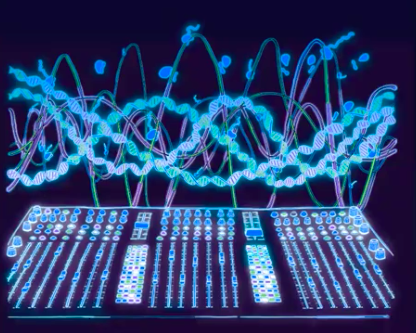How a passion for scientific artwork can be monetized or created into a business.
On June 29, Claudia Stocker, owner of Vivid Biology led an ArtLab AiR Workshop. Stocker, a science illustrator herself, started Vivid Biology in an effort to combine her artistic and scientific passions into a business. According to Stocker, Vivid Biology makes science stand out. The company does artwork, diagrams, science-inspired product design.

In the workshop, she began by discussing her creative journey. By having the opportunity to study natural sciences and art on separate occasions and freelancing after graduation in graphic art and design, she realized pretty early on that her passion was doing art for scientists. Thus, she shifted her focus towards a way to combine her interests into a stable career.

Eventually, she found herself partnering with scientists and science-based companies to create art. Along her path, she found ways to develop her art and illustration skills. She also found ways to turn her creative passion into a business. After taking on other jobs such as commission-based work and public art creation, she founded Vivid Biology in 2018. In order to learn more about the landscape of public engagement, she is currently pursuing a master’s in science communication.
In the last half of the workshop, she also clued ArtLab’s artists-in-residence in on key tools of the trade. These tools included art and creation tips, such as how she creates traditional artwork, digital illustration, whiteboard animations, or how she deals with larger images. However, Stocker also gave the residents useful business insight, such as tools for bookkeeping, online retail, company communication, and project management.
Moreover, she shared the overall creative process of new projects, by overviewing Vivid Biology’s case studies. The examples were complete with the initial assignment, preliminary ideas and sketches, what client communication was like, detailed concepts, and finally the end results.
One project she discussed was an assignment to create advertising artwork for TUNR, a flexible gene-editing system. TUNR allows researchers to fine-tune gene expression. It does this by inserting DNA sequences before the gene that cause the ribosome to stall or fall off the DNA. The longer the sequence, the less likely the ribosome is to complete transcription. Essentially, the technology allows one to dial up and down genes much like a volume control. Thus, according to Stocker, the company really liked the idea of incorporating music into the advertising. Below are some of Stocker’s preliminary idea-sketches, such as a ribosome with a volume button.
Many of the initial sketches focused on music and instruments, including an RNA harp, a conductor directing an orchestra of ribosomes, and a DJ deck with RNA and DNA soundwaves. The latter later became the final artwork. The purpose of the advertising artwork is to give an idea of what the product does, but as Claudia informed the residents, “you also have to be wary of the associations you’re giving.” For example, the gramophone image might give the impression that TUNR is not a particularly cutting edge product. The sketches, concept art, and final piece is pictured below.
A very similar process was undergone for the Bristol Biodesign Institute, who wanted a piece of public artwork as part of the University of Bristol iconic signage project.

The image below is a final piece of artwork created for Bristol Biodesign Institute. The University of Bristol wanted to put up totems around the city to show where their eight research institutions were located. Stocker had the chance to design the art for the Biodesign Institution. Tasked with the strange shape of long skinny totems (25 centimeters wide and 3 meters tall), she started by working out how to design using the unusual aspect ratio. She also chatted with researchers at the institute to get an idea of what the researchers were doing, and created blueprints based on the interviews. After creating multiple concepts, they agreed on a final design, which depicts a big cell and molecules, built up and filled in with proteins. Now, the image is up outside of the building in Bristol.

Not only did the residents gain valuable insight as to how to monetize their sciart endeavors, but also learned much about the business of sciart and the type of work they may do as a commercial sciartist.










Comentarios